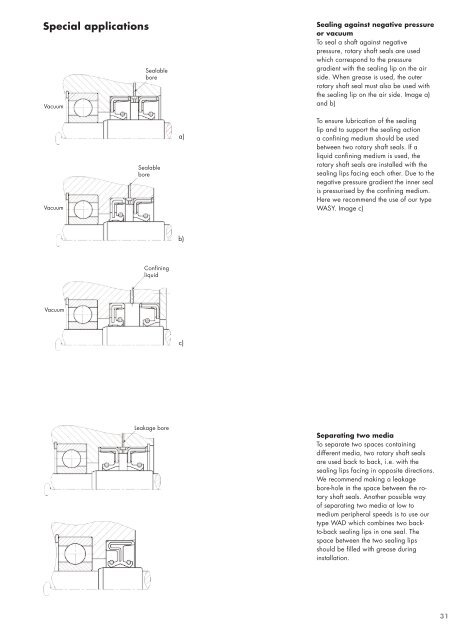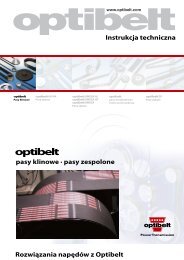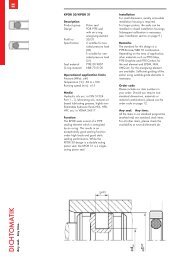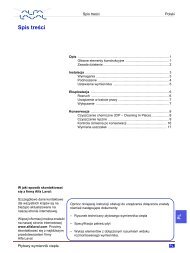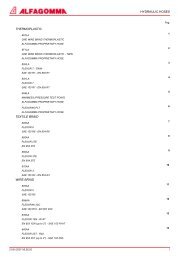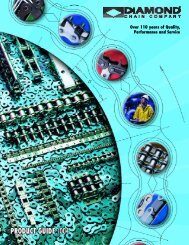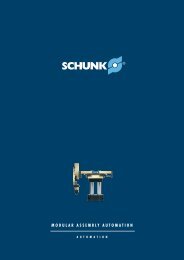DICHTOMATIK
DICHTOMATIK - Spinet
DICHTOMATIK - Spinet
- No tags were found...
Create successful ePaper yourself
Turn your PDF publications into a flip-book with our unique Google optimized e-Paper software.
Special applications<br />
Vacuum<br />
Sealable<br />
bore<br />
Sealing against negative pressure<br />
or vacuum<br />
To seal a shaft against negative<br />
pressure, rotary shaft seals are used<br />
which correspond to the pressure<br />
gradient with the sealing lip on the air<br />
side. When grease is used, the outer<br />
rotary shaft seal must also be used with<br />
the sealing lip on the air side. Image a)<br />
and b)<br />
Vacuum<br />
Sealable<br />
bore<br />
a)<br />
To ensure lubrication of the sealing<br />
lip and to support the sealing action<br />
a confining medium should be used<br />
between two rotary shaft seals. If a<br />
liquid confining medium is used, the<br />
rotary shaft seals are installed with the<br />
sealing lips facing each other. Due to the<br />
negative pressure gradient the inner seal<br />
is pressurised by the confining medium.<br />
Here we recommend the use of our type<br />
WASY. Image c)<br />
b)<br />
Confining<br />
liquid<br />
Vacuum<br />
c)<br />
Leakage bore<br />
Separating two media<br />
To separate two spaces containing<br />
different media, two rotary shaft seals<br />
are used back to back, i.e. with the<br />
sealing lips facing in opposite directions.<br />
We recommend making a leakage<br />
bore-hole in the space between the rotary<br />
shaft seals. Another possible way<br />
of separating two media at low to<br />
medium peripheral speeds is to use our<br />
type WAD which combines two backto-back<br />
sealing lips in one seal. The<br />
space between the two sealing lips<br />
should be filled with grease during<br />
installation.<br />
31


